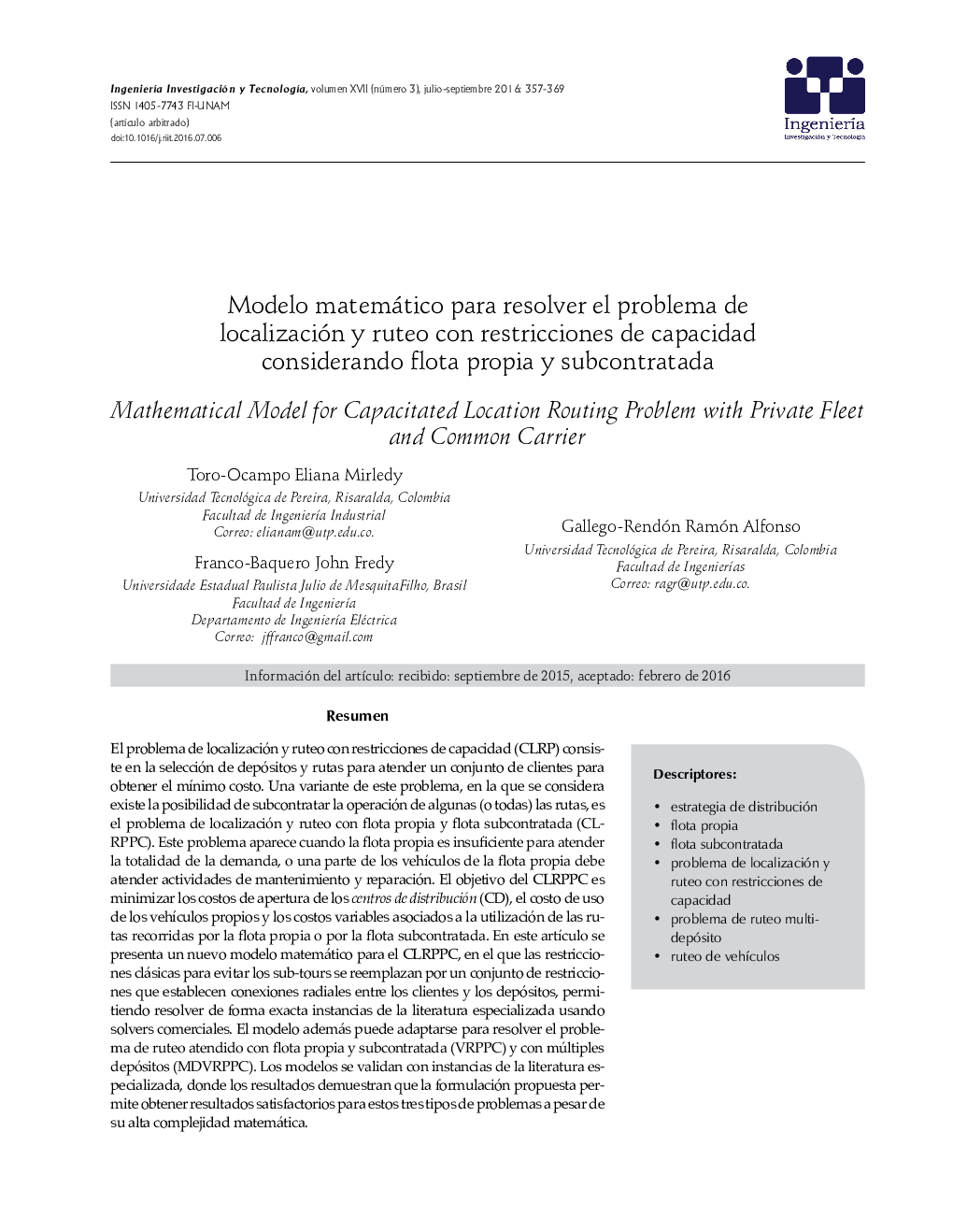| Article ID | Journal | Published Year | Pages | File Type |
|---|---|---|---|---|
| 274806 | Ingeniera, Investigacin y Tecnologa | 2016 | 13 Pages |
ResumenEl problema de localización y ruteo con restricciones de capacidad (CLRP) consiste en la selección de depósitos y rutas para atender un conjunto de clientes para obtener el mínimo costo. Una variante de este problema, en la que se considera existe la posibilidad de subcontratar la operación de algunas (o todas) las rutas, es el problema de localización y ruteo con flota propia y flota subcontratada (CLRPPC). Este problema aparece cuando la flota propia es insuficiente para atender la totalidad de la demanda, o una parte de los vehículos de la flota propia debe atender actividades de mantenimiento y reparación. El objetivo del CLRPPC es minimizar los costos de apertura de los centros de distribución (CD), el costo de uso de los vehículos propios y los costos variables asociados a la utilización de las rutas recorridas por la flota propia o por la flota subcontratada. En este artículo se presenta un nuevo modelo matemático para el CLRPPC, en el que las restricciones clásicas para evitar los sub-tours se reemplazan por un conjunto de restricciones que establecen conexiones radiales entre los clientes y los depósitos, permi- tiendo resolver de forma exacta instancias de la literatura especializada usando solvers comerciales. El modelo además puede adaptarse para resolver el problema de ruteo atendido con flota propia y subcontratada (VRPPC) y con múltiples depósitos (MDVRPPC). Los modelos se validan con instancias de la literatura especializada, donde los resultados demuestran que la formulación propuesta permite obtener resultados satisfactorios para estos tres tipos de problemas a pesar de su alta complejidad matemática.
The Capacitated Location Routing Problem (CLRP) consists in the selection of depots and routes to serve all the clients such that the minimum cost is obtained. A variant of this problem, where it is considered that there is the possibility of outsourcing the operation of some (or all) routes, is the location routing problem with private fleet and common carrier (CLRPPC). This problem is presented when the own fleet is insufficient to serve the whole demand or part of its own fleet must have maintenance and repairing activities. The CLRPPC objective is to minimize the costs of opening distribution centers (DC), the cost for using their own vehicles and the variable costs associated with the use of the routes traveled by their own fleet or an outsourced fleet. This paper presents a new mathematical model for CLRPPC, where the classical restrictions to prevent sub-tours are replaced by a set of constraints that establish the radio links between customers and depots, solving accurately instances used in the literature using commercial solvers. Moreover, the model can be adapted to solve the Vehicle Routing Problem with Private Fleet and Common Carrier (VRPPC) and Multi-Depot Vehicle Routing Problem with Private Fleet and Common Carrier (MDVRPPC). The models are validated with instances of the literature, where the results show that the proposed formulation gives satisfactory results for these three types of problems despite its high mathematical complexity.
